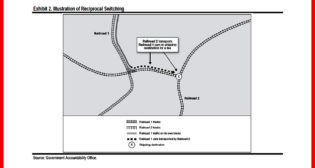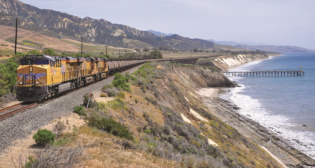
U.S. EIA: Rail still rules domestic coal delivery
Written by Douglas John BowenU.S. coal use for electricity generation may be declining, and U.S. freight railroads may be delivering less coal as a result. But rail still is by far the modal choice for remaining demand, according to the U.S. Energy Information Administration's June 11, 2014 "Today in Energy" brief.
“Two-thirds of the coal (67%) was shipped either completely or in part by rail. The balance was moved by river barge (especially over the Mississippi and Ohio rivers and their tributaries), truck, and—for power plants located at the coal mine—by conveyor,” the EIA brief said.
“In 2013, electric power generators consumed 858 million tons of coal, accounting for 93% of all coal consumed in the United States and 39% of electric power generation,” EIA added.
 “Between 2008 and 2013, the share of coal shipments made by river barge increased from 7% to 12%,” EIA noted, detailing the change in graph form (at right). “ In contrast, truck shipments fell from 12% to 10%, and shipments made by other modes (i.e., nonriver barge waterways, pipeline, tidewater piers, and coastal ports) fell from 7% to 1%,” EIA noted.
“Between 2008 and 2013, the share of coal shipments made by river barge increased from 7% to 12%,” EIA noted, detailing the change in graph form (at right). “ In contrast, truck shipments fell from 12% to 10%, and shipments made by other modes (i.e., nonriver barge waterways, pipeline, tidewater piers, and coastal ports) fell from 7% to 1%,” EIA noted.
“These changes occurred because many of the plants that received their coal by one of the other modes in 2008 either retired or shifted to another mode,” EIA added.
The U.S. Energy Information Administration “collects, analyzes, and disseminates independent and impartial energy information to promote sound policymaking, efficient markets, and public understanding of energy and its interaction with the economy and the environment,” according to the EIA website. Formed in 1977, the EIA is part of the U.S. Federal Statistical System.



